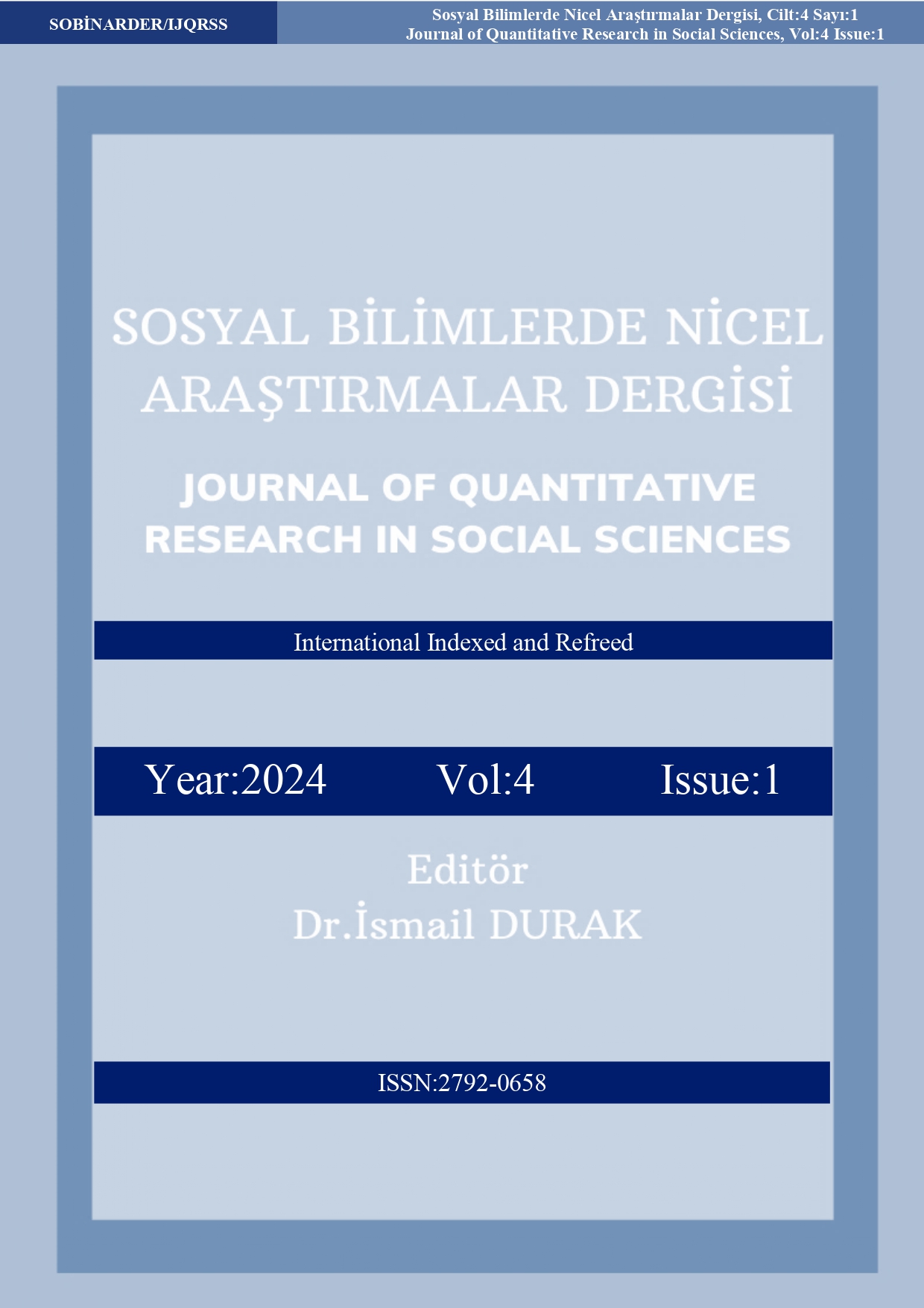Döviz Kuru Geçiş Etkisi: Türkiye ve Avrupa Devletleri Örneği
Exchange Rate Passage Effect: The Case of Türkiye and European States
Anahtar Kelimeler:
Döviz Kuru- Geçişkenlik- Birim kök testiÖzet
Döviz kurunun geçiş hızı ve büyüklüğü farklı dönemlerde farklı bölgelerde değişebilmektedir. Nitekim ithal bağımlı ülkelerde geçişkenlik artma eğilimi gösterebileceği gibi fiyatlar genel seviyesinin belirsiz bir şekilde yukarı yönlü hareketi ekonomiyi kötü yönde etkileyecektir. Döviz kuruyla fiyatlar arasındaki geçiş etkisinin yönünü ve büyüklüğünü test etmek, ayrıca bu sonuçları bölgedeki diğer ülkelerle karşılaştırabilmek amacıyla, pandemi dönemini de kapsayan 2020-2024 yılları arasında bir inceleme gerçekleştirilmiştir. Çalışmada üretici fiyat endeksi (ÜFE) tüketici fiyat endeksi (TÜFE) ve reel efektif döviz kuru serilerinden faydalanarak Birim Kök Testi ADF ve PP analizleri uygulanmıştır. Ardından VAR modeli oluşturulmuştur. Nedenselliği test etmek için yapılan Granger nedensellik analizi yanı sıra Tado-Yamomata analizi yapılmıştır. Bu analizler sonunda Türkiye’de ÜFE’den TÜFE’ye tek yönlü nedenselliğin var olduğu gözlemlenmiştir. Bölgedeki diğer ülkelerde geçiş büyüklüğü daha az olmakla birlikte yönünün ÜFE’den TÜFE’ye doğru olduğu sonucuna ulaşılmıştır.
Referanslar
Altıner, A., & Sungur, O. (2021). Türkiye’de döviz kuru ve enflasyon arasında zamanla değişen nedensellik ilişkisi: 1989-2020 dönemi için kanıtlar. İnsan ve Toplum Bilimleri Araştırmaları Dergisi, 10(4), 3398-3420.
Bouakez, H., & Rebei, N. (2008). Has exchange rate pass-through really declined? Evidence from Canada. Journal of International Economics, 75, 249–267.
Bussiere, M., & Peltonen, T. (2007). Export and import prices in emerging markets: What role for exchange rate pass-through? Frankfurt: European Central Bank.
Campa, J. M., & Goldberg, L. S. (2005). Exchange rate pass-through into import prices. The Review of Economics and Statistics, 87(4), 679–690.
Can, M. (2009). İşletmelerde zaman serileri analizi ile tahmin (Doktora tezi). İstanbul Üniversitesi, Sosyal Bilimler Enstitüsü, İşletme Anabilim Dalı, Sayısal Yöntemler Doktora Programı.
Choudhri, E. U., & Hakura, D. S. (2006). Exchange rate pass-through to domestic prices: Does the inflationary environment matter? Journal of International Money and Finance, 25, 614–639.
Erden, L., & Özkan, İ. (2014). Time-varying nature and macroeconomic determinants of exchange rate pass-through. International Review of Economics and Finance, 38, 56-66.
Ghosh, A., & Rajan, R. S. (2009a). Exchange rate pass-through in Korea and Thailand: Trends and determinants. Japan and the World Economy, 21, 55–70.
Ghosh, A., & Rajan, R. S. (2009b). What is the extent of exchange rate pass-through in Singapore? Has it changed over time? Journal of the Asia Pacific Economy, 14(1), 61–72.
Goldberg, L., & Campa, J. (2010). The sensitivity of the CPI to exchange rates: Distribution margins, imported inputs, and trade exposure. Review of Economics and Statistics, 92, 392–407.
Gust, C., Leduc, S., & Vigfusson, R. J. (2006, August). Trade integration, competition, and the decline in exchange rate pass-through. International Finance Discussion Paper No. 864. Washington, DC: Federal Reserve Board.
Holmes, M. J. (2009). The response of exchange rate pass-through to the macroeconomic environment. The Open Business Journal, 2, 1–6.
Leiderman, L. (1993). Inflation and disinflation: The Israeli experiment. ABD: University of Chicago Press.
Marazzi, M., Sheets, N., Vigfusson, R., Faust, J., Gagnon, J., Marquez, J., et al. (2005). Exchange rate pass-through to U.S. import prices: Some new evidence. International Finance Discussion Papers No. 2005-833. Washington, DC: Federal Reserve Board.
Naimoğlu, M. (2023). The exchange rate pass-through effect in Türkiye: Fourier Shin cointegration approach (2006-2023). Dokuz Eylül Üniversitesi Sosyal Bilimler Enstitüsü Dergisi, 26(1), 208-225.
Newbold, P. (1995). Statistics for business and economics (4th ed.). Prentice Hall.
Oğul, B. (2022). BRICS-T ülkelerinde döviz kuru geçiş etkisi: Panel eşbütünleşme testi. Antalya Bilim Üniversitesi Uluslararası Sosyal Bilimler Dergisi, 3(1), 83-92.
Olivei, G. (2002). Exchange rates and the prices of manufacturing products imported into the United States. New England Economic Review, Federal Reserve Bank of Boston, 3–8.
Orhunbilge, N. (2002). Uygulamalı regresyon ve korelasyon analizi. İstanbul Üniversitesi Basım ve Yayınevi.
Otani, A., Shiratsuka, S., & Shirota, T. (2003). The decline in the exchange rate pass-through: Evidence from Japanese import prices. Bank of Japan Monetary and Economic Studies, 21(3), 53–81.
Sekine, T. (2006). Time-varying exchange rate pass-through: Experiences of some industrial countries. BIS Working Paper No. 202.
İndir
Yayınlanmış
Nasıl Atıf Yapılır
Sayı
Bölüm
Lisans
Telif Hakkı (c) 2024 Sosyal Bilimlerde Nicel Araştırmalar Dergisi

Bu çalışma Creative Commons Attribution-NonCommercial 4.0 International License ile lisanslanmıştır.
Telif hakkı hakkında










